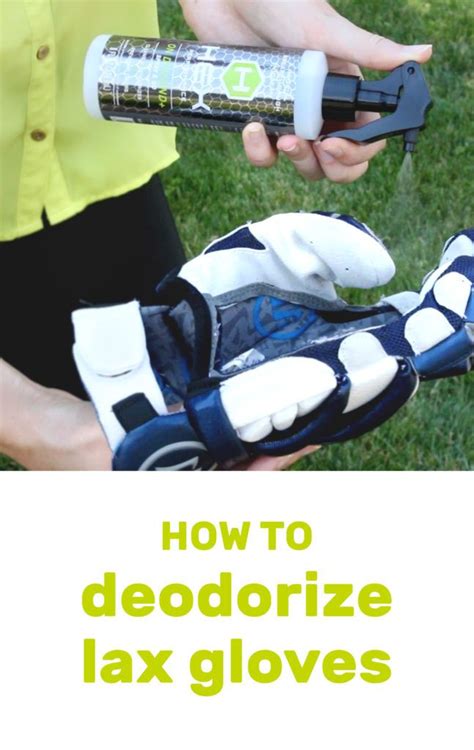Lacrosse Glove Cleaning Hacks You'll Love
Lacrosse gloves take a beating. From sweat and grime to grass stains and the occasional mud puddle, your gloves endure a lot. Keeping them clean isn't just about aesthetics; it's about maintaining their performance and extending their lifespan. Regular cleaning prevents the buildup of bacteria and odors, ensuring your gloves stay comfortable and hygienic throughout the season. This article will explore several lacrosse glove cleaning hacks you'll love, addressing common concerns and offering effective solutions.
How Often Should I Clean My Lacrosse Gloves?
This depends on how frequently you use them. For regular players, a thorough cleaning every 2-3 weeks is recommended. After particularly muddy games, a quick rinse and spot cleaning are crucial. Neglecting regular cleaning can lead to persistent odors, the deterioration of materials, and potentially harmful bacterial growth.
What are the Best Ways to Clean Lacrosse Gloves?
Several methods exist for cleaning lacrosse gloves, each with its own pros and cons.
Hand Washing:
This is the most common and often the most effective method.
What you'll need:
- Mild detergent (like dish soap)
- Lukewarm water
- Soft-bristled brush (old toothbrush works great!)
- Clean towels
Steps:
- Remove excess dirt: Use a damp cloth to wipe away loose dirt and mud.
- Mix detergent and water: Create a soapy solution in a basin.
- Submerge the gloves: Gently submerge the gloves in the soapy water, ensuring they're fully saturated.
- Scrub gently: Use the brush to scrub away stubborn stains, paying special attention to areas with heavy grime. Avoid harsh scrubbing which can damage the material.
- Rinse thoroughly: Rinse the gloves under lukewarm running water until all soap residue is gone.
- Air dry: Stuff the gloves with clean towels to help them retain their shape and air dry them away from direct sunlight or heat.
Machine Washing (With Caution!):
While convenient, machine washing should be approached with caution. Always check the manufacturer's care instructions first. Some gloves may not withstand the rigors of a washing machine.
If machine washing is permitted:
- Use a mesh laundry bag to protect the gloves.
- Use a gentle cycle with cold water and mild detergent.
- Avoid using bleach or fabric softener.
- Air dry completely.
Spot Cleaning:
For quick cleaning between washes, spot cleaning is your best friend. This is ideal for tackling minor stains or spills. Use a damp cloth and mild detergent to gently rub away the stain. Rinse with clean water and allow to air dry.
How to Remove Specific Stains from Lacrosse Gloves?
Different stains require different approaches.
Grass Stains:
Pre-treat grass stains with a stain remover specifically designed for fabrics before washing. Allow the remover to sit for a few minutes before washing or spot cleaning.
Mud Stains:
Allow mud to dry completely before attempting to remove it. Once dry, gently brush away as much mud as possible before washing or spot cleaning.
Sweat and Odor:
The combination of sweat and bacteria is often the source of unpleasant odors. Regular washing with mild detergent helps to combat this. Consider using baking soda as a natural deodorizer. Sprinkle baking soda inside the gloves, let it sit for a few hours, then brush it out before washing.
Can I Use Bleach on My Lacrosse Gloves?
Generally, no. Bleach can damage the material of your lacrosse gloves, fading colors and weakening the fabric. Opt for gentler cleaning methods.
How to Dry Lacrosse Gloves Properly?
Air drying is always the best approach. Avoid using a dryer, as the high heat can damage the materials and shrink the gloves. Stuffing the gloves with clean towels helps them maintain their shape while drying.
By following these lacrosse glove cleaning hacks, you can keep your gloves clean, fresh, and in top condition for many games to come. Remember to always check the manufacturer's care instructions before attempting any cleaning method. Proper care will significantly extend the life of your equipment and enhance your performance on the field.

